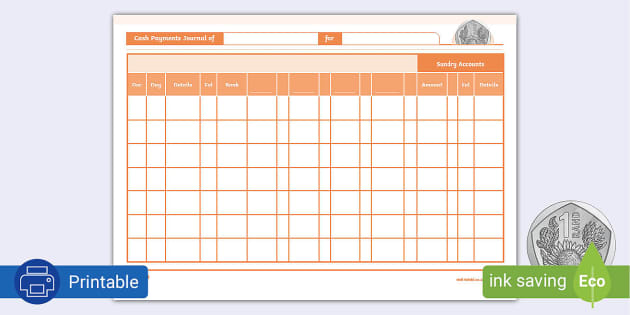Clio Manage is a software tailored for law firms to handle the business side efficiently. It helps in managing client trust accounts (CTAs), crucial for holding unearned funds. The American Bar Association highlights the importance of not withdrawing such funds without client approval, reinforcing Clio Manage’s http://vo.od.ua/rubrics/raznoe/41287.php significance in adhering to these standards. When outdated Bar Association rules are not adhered to, it can lead to financial losses for law firms. Moreover, using legal-friendly services like LawPay and LawCharge can help avoid these unnecessary expenses while ensuring compliance with trust accounting laws.
Legal Accounting Specialist and its Essential Skills & Duties
Law firms must regularly review these financial reports to ensure they stay compliant with regulations, meet their obligations to clients, and make informed decisions for their firm’s growth. Implementing best practices and maintaining accurate, up-to-date records are crucial in achieving successful law firm accounting. Law firms deal with various financial transactions, such as receiving payments from clients, paying expenses, and managing trust accounts. It is crucial to accurately record these transactions to maintain a clear financial picture of the firm. Legal bookkeeping is an essential administrative task that occurs before accounting takes place.
QuickBooks Online: Best general accounting software with law firm software integrations
- Accountants can help uncover cost-saving opportunities, identify the most profitable cases your firm should consider, and discover opportunities to improve cash flow.
- While accrual accounting is great for looking ahead, it’s not an ideal method for monitoring your cash flow or seeing how much cash you have.
- Fortunately, you can easily avoid many of them if you know which types of errors are the most common.
- Legal accountants also need to be intimately familiar with the relevant rules and regulations and be comfortable using different types of software.
- Implementing best practices and maintaining accurate, up-to-date records are crucial in achieving successful law firm accounting.
This technology not only simplifies the management of client funds but also offers advanced reporting and analytics features that provide valuable insights for enhancing law firm operations. Proper accounting for law firms is crucial for compliance with regulatory requirements, ensuring business growth, and protecting the firm’s reputation. Failure to maintain accurate financial records can lead to legal and ethical consequences. Some accountants record financial transactions, and some bookkeepers assist with business decisions and prepare financial statements.
Law Firm Accounting Guide: 11 Steps to Boost Efficiency
Unless the IRS requires you to use the accrual method—for law firms, this rule only kicks in once you start making $10m a year—which method is best will depend on your accounting needs. Accrual accounting records revenues and expenses when they are earned and incurred, regardless of when the money is actually received or paid. For example, when you send an invoice to a client, you’ll mark it as revenue, even though you might not get paid for 30 days.
Fundamentals of Accounting for Lawyers
Implementing legal technology solutions such as Clio Manage can help manage client funds and conduct reconciliations, mitigating the risk of data entry errors. Hiring an accountant who understands the significance of the chart of accounts can greatly benefit a law firm. They can ensure that all client funds are appropriately allocated and tracked, preventing any potential mishandling or confusion. Equally important is choosing the right accounting method and hiring a certified public accountant (CPA) to ensure compliance with state Bar Association rules and accurate financial reporting. Law firms often choose to hire professional accountants or bookkeepers who understand things like client trust accounts so that everything with money stays safe and correct. Law firms that bring in legal accounting software can save time and cut down on mistakes.
- Legal accounting software that syncs your firm’s financial activity helps take care of bookkeeping tasks automatically—creating more accurate records with less work for you.
- Every financial operation in your law firm must align perfectly with the regulatory requirements, from the loftiest budget decision to the smallest expense report.
- Failure to keep accurate records may lead to sanctions for your firm, even if the mistake is the fault of your bank or accountant.
- Hiring Bookkeeping Virtual Assistants optimizes law firms’ financial management and operations, providing advantages for law practices of all sizes.
- A comprehensive cloud-based accounting solution can help you keep your data organized in one spot—and is available from anywhere.
- Furthermore, it’s essential to consider an accountant who can effectively manage client billing and invoicing processes while maintaining accurate financial data.
Accounting ethics plays a vital role in the legal profession as attorneys and accountants have access to sensitive financial information of their clients. Ethical violations can lead to serious consequences, such as disbarment, penalties, or fines. A https://www.myvideo.ru/articles/art9.shtml robust credit history separates finances, enhances credibility, and unlocks diverse financing. Taming them requires a strategic approach to manage overhead costs effectively. Each element from tax planning to cost recovery adds a layer of intricacy.
This helps in managing client expectations and ensuring that retainer funds are appropriately utilized. From tracking billable hours and managing trust accounts to producing in-depth financial reports, certain software shines in areas where others fall short. It’s important to pick a system that fits with your firm’s operations and budget. It’s a strategic blueprint that aims to minimize tax liabilities, all within legal bounds. For law firms, this might include using business expense deductions or employing a deferral strategy to delay tax payments. You’ll also want to consider your law firm’s entity type, the number of owners, financing, and the location of your practice.
Final thoughts on accounting and bookkeeping best practices
As your business grows, you can bring on an outsourced bookkeeper who will provide traditional bookkeeping services such as categorizing and reconciling transactions. Our recommendation is Bench for lawyers looking to grow their practice and spend more time on revenue-generating activities such as client development or billing. As a secondary layer of reconciliation, you’ll also need to make sure that each client’s IOLTA balance on your firm’s books adds up to the total balance of your IOLTA bank account.
This not only ensures compliance but also reflects the firm’s commitment to upholding the integrity of the legal profession. Given the ethical responsibility of handling client funds, create specific accounts for trust transactions. This ensures that http://neskli.com/nesklifriends.php?rz=bum trust funds are meticulously tracked, safeguarding against any ethical or legal complications. While the principles of bookkeeping remain universal, the legal profession introduces nuances that make bookkeeping for law firms a unique endeavor.










